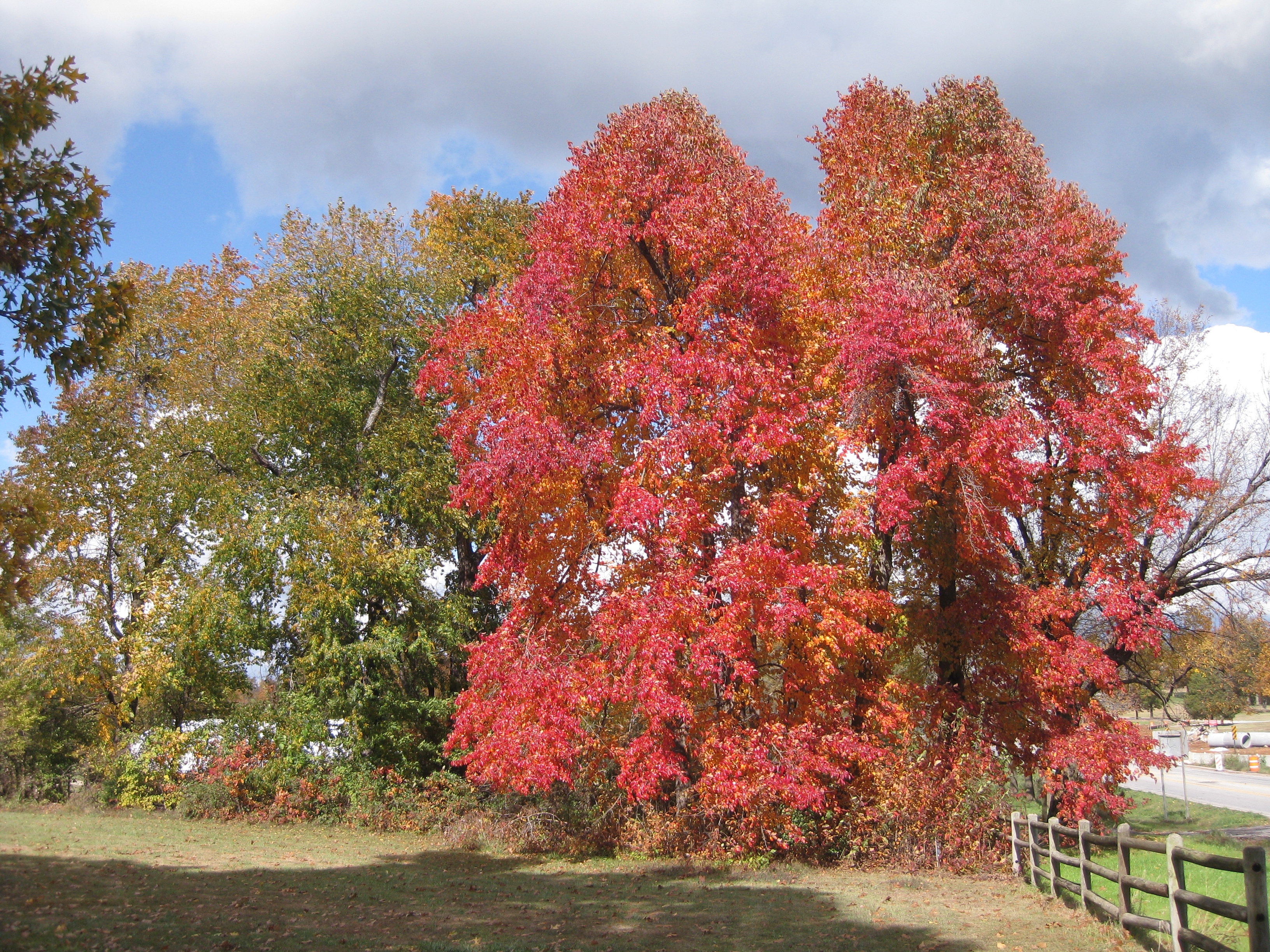Fall Color – a happy accident
Contact
University of Arkansas System Division of Agriculture
Cooperative Extension Service
2301 S. University Ave.
Little Rock, AR 72204

Fall Color – a happy accident
Fall color season is here. Now that I’ve moved on in my life, I no longer get the annual calls from the news media people asking what the fall color prediction is for the coming season. I would always oblige, and though I was wrong as often as I was right, the need for an educated guess seemed to be more important than the need for accuracy. But because fall color is so beautiful and fascinating, I’ve always been interested in what factors drive the annual display.
If you’ve ever stood at the counter and watched a technician mix a gallon of paint, you have the basis for understanding how just a little bit of pigment mixed with a large volume of some other pigment can affect color. The same thing happens in leaves. While green is the primary color of our forests, autumnal changes in daylength and weather blend in different pigments to affect the changes we see each year.
There are three principal pigments in plant leaves; chlorophyll, carotenoids and anthocyanins. The first two are what are called plastid pigments. The plastid pigments reside in tiny organelles inside each plant cell that contains the pigments. The most important – from a human perspective at least – is the green of chlorophyll that takes carbon dioxide from the air and converts it into sugars that are the basis of the supply chain that keeps all of us fed. Inside the chloroplast – the name of the organelle where the chlorophyll pigment resides – are a series of tiny plate-like structures that house the pigments. The orientation and arrangement of these stacks of plates change as light conditions change through the season. But as fall arrives the chlorophyll pigments begin breaking down and they are not replaced, allowing the always-present carotenoid pigments to be seen.
The carotenoid pigments produce shades of yellow, orange and brown and are responsible for colors found in things such as carrots, corn, banana skins and daffodils. They are believed to be in the chloroplasts to protect the chlorophyll pigment from too much light. They have been adapted by their host plants to facilitate reproduction by making colorful flowers – the petals of which are highly modified leaves – or attractive fruit. How they protect the chlorophyll pigment is still an active field of research, and though interesting, is too involved to explain here. Suffice it to say that green plants growing in full sun mostly live in a world where there is more light than is needed, so these pigments help disperse the excess solar energy by dissipating heat directly or indirectly by shunting it into other biochemical pathways.
Cellular organelles living inside cells such as mitochondria and plastids have their own genetic code, which means they were once free-living organisms that formed a symbiotic relationship with another cell. Humans and plants have mitochondria, the organelle that converts those sugars into energy used to power all cellular processes. Chloroplasts have genes that float freely in the cytoplasm (life forms called prokaryotes) and are closely related to the blue-green algae that is thought to have appeared on earth sometime around 3.5 billion years ago. Sometime after that more advanced life forms, still single-celled organisms but with their DNA safely tucked away inside a nuclear membrane (the eukaryotes), appeared and formed a happy family with the free-living energy-producing organelles (mitochondria) and energy-absorbing organelles (chloroplasts). Recent studies of diatoms (forms of single-celled algae found in seawater) suggest that the enzyme systems produced by carotenoid pigments appeared in those species about 900 million years ago, fully 500 million years before multi-cellular land plants appeared.
The third type of pigment are the anthocyanins. These pigments are water-soluble pigments that form in the cell sap (cytoplasm) and produce colors such as red, purple and blue. Beets, strawberries, apple skins, blueberries and flowers such as delphiniums all owe their color to these water-soluble pigments. In the fall when nights get longer, a group of specialized cells form at the base of the leaf petiole (called the abscission layer) and begin blocking the export of sugars from the leaf. If the days are bright and the nights are cool, lots of sugars build up. Faced with all this oversupply of sugars, the cells begin converting them into various anthocyanin pigments. In black gums, this transition begins in mid-September and the result is a brilliant red. In dogwoods, it begins a few weeks later and the resultant color is more purple-tinged.
The actual color we enjoy each fall is never the same because environmental conditions are seldom identical. Cool nights and bright sunny days favor the reds and purples associated with anthocyanin production while the yellow and orange plastid carotenoid pigments are not much affected by weather because they are already in the leaf tissue and are rendered visible once chlorophyll breaks down. The yellows of hickory and the oranges of sassafras tend to be present each year regardless of weather conditions, but to have a spectacular year where the oaks do their thing, all of the pigments must do their part and blend into the final product. Oaks, if reliant on only carotenoid pigments for their color, turn a uniform cardboard brown. But, if the anthocyanins have a chance to form before the leaf is killed by a hard freeze, shades of red and orange will shine through.
